Volume 9-14 (2020-26)
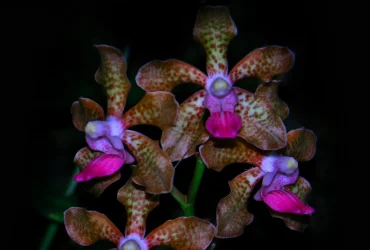 v13i2.337
v13i2.337ISSN: 1800-427X (printed)
eISSN: 1800-427X (online)
DOI:10.47605/tapro.v13i2.337
Submitted date: 30 May 2024
Accepted date: 31 October 2024
Published date: 22 December 2024
Pp. 124–131.
SEXUAL MALES IN THE PARTHENOGENETIC Hemidactylus cf. garnotii (SQUAMATA: GEKKONIDAE) IN MIZORAM, INDIA
Krijoboti Thaosen, Jayaditya Purkayastha*, Mathipi Vabeiryureilai & Hmar T. Lalremsanga
*Corresponding author. E-mail: mail.jayaditya@gmail.com
Abstract
Most lizard species reproduce sexually, with both males and females contributing genetic material to offspring. However, a subset, including certain gecko species, reproduces via parthenogenesis, wherein females produce offspring without fertilization. Hemidactylus garnotii Duméril & Bibron, 1836 sensu lato, a parthenogenetic species complex native to parts of Southeast Asia and India, was previously understood to consist solely of females. Despite earlier reports suggesting the possible existence of males, these were attributed to misidentification or incomplete verification. In this study, based on histological and gonadal examination, we report the first confirmed male individuals of H. garnotii from Mizoram, India. Specimens collected from Dampa Tiger Reserve and Palak National Wetland were analysed through morphological assessments, histology, and genetic sequencing (ND2 gene). Histological findings revealed spermatogenesis stages in males, establishing the presence of functional testes. Our results thus document a notable exception to the presumed all-female composition of H. garnotii, with implications for understanding reproductive strategies in this specie.
Key words : Fertilization, ND2 gene, histology, offspring, reproduction, spermatogenesis
Section Editor: Ivan Ineich
eISSN: 1800-427X (online)
DOI:10.47605/tapro.v13i2.337
Submitted date: 30 May 2024
Accepted date: 31 October 2024
Published date: 22 December 2024
Pp. 124–131.
SEXUAL MALES IN THE PARTHENOGENETIC Hemidactylus cf. garnotii (SQUAMATA: GEKKONIDAE) IN MIZORAM, INDIA
Krijoboti Thaosen, Jayaditya Purkayastha*, Mathipi Vabeiryureilai & Hmar T. Lalremsanga
*Corresponding author. E-mail: mail.jayaditya@gmail.com
Abstract
Most lizard species reproduce sexually, with both males and females contributing genetic material to offspring. However, a subset, including certain gecko species, reproduces via parthenogenesis, wherein females produce offspring without fertilization. Hemidactylus garnotii Duméril & Bibron, 1836 sensu lato, a parthenogenetic species complex native to parts of Southeast Asia and India, was previously understood to consist solely of females. Despite earlier reports suggesting the possible existence of males, these were attributed to misidentification or incomplete verification. In this study, based on histological and gonadal examination, we report the first confirmed male individuals of H. garnotii from Mizoram, India. Specimens collected from Dampa Tiger Reserve and Palak National Wetland were analysed through morphological assessments, histology, and genetic sequencing (ND2 gene). Histological findings revealed spermatogenesis stages in males, establishing the presence of functional testes. Our results thus document a notable exception to the presumed all-female composition of H. garnotii, with implications for understanding reproductive strategies in this specie.
Key words : Fertilization, ND2 gene, histology, offspring, reproduction, spermatogenesis
Section Editor: Ivan Ineich
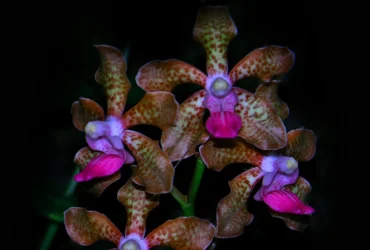 v13i2.336
v13i2.336ISSN: 1800-427X (printed)
eISSN: 1800-427X (online)
DOI:10.47605/tapro.v13i2.336
Submitted date: 22 July 2024
Accepted date: 31 October 2024
Published date: 7 December 2024
Pp. 116–123, Pl. 26.
NEW SYSTEMATIC INSIGHTS INTO Micryletta erythropoda (TARKHNISHVILI, 1994) (ANURA: MICROHYLIDAE) WITH A FIRST REPORT FROM LAVA CAVES IN VIETNAM
Vu Dang Hoang Nguyen*, Thinh Gia Tran, Michael Laumanns, Minh Anh Nguyen, Huy Duc Hoang6, Thao Thi Phuong Nguyen*
*Corresponding author. E-mails: nguyendanghoangvu888@gmail.com; hdhuy@hcmus.edu.vn
Abstract
Field surveys conducted in 2020 and 2023 within the lava caves of Dak Nong UNESCO Global Geopark, Dak Nong Province, Vietnam, resulted in the collection of nine specimens of the genus Micryletta. Molecular and morphological analyses confirmed that these specimens belong to M. erythropoda. This study represents the second documented occurrence of M. erythropoda outside its type locality in Vietnam and the first known instance of the species inhabiting deep lava caves. Additionally, we provide the first detailed description of male M. erythropoda specimens, contributing new insights into the species’ morphology and habitat preferences.
Key words : Amphibians, lava cave, morphological analyses, new record, phylogenetics, systematics
Section Editor: Enrique La Marca
eISSN: 1800-427X (online)
DOI:10.47605/tapro.v13i2.336
Submitted date: 22 July 2024
Accepted date: 31 October 2024
Published date: 7 December 2024
Pp. 116–123, Pl. 26.
NEW SYSTEMATIC INSIGHTS INTO Micryletta erythropoda (TARKHNISHVILI, 1994) (ANURA: MICROHYLIDAE) WITH A FIRST REPORT FROM LAVA CAVES IN VIETNAM
Vu Dang Hoang Nguyen*, Thinh Gia Tran, Michael Laumanns, Minh Anh Nguyen, Huy Duc Hoang6, Thao Thi Phuong Nguyen*
*Corresponding author. E-mails: nguyendanghoangvu888@gmail.com; hdhuy@hcmus.edu.vn
Abstract
Field surveys conducted in 2020 and 2023 within the lava caves of Dak Nong UNESCO Global Geopark, Dak Nong Province, Vietnam, resulted in the collection of nine specimens of the genus Micryletta. Molecular and morphological analyses confirmed that these specimens belong to M. erythropoda. This study represents the second documented occurrence of M. erythropoda outside its type locality in Vietnam and the first known instance of the species inhabiting deep lava caves. Additionally, we provide the first detailed description of male M. erythropoda specimens, contributing new insights into the species’ morphology and habitat preferences.
Key words : Amphibians, lava cave, morphological analyses, new record, phylogenetics, systematics
Section Editor: Enrique La Marca
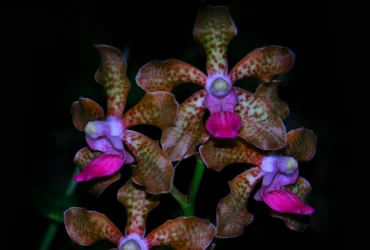 v13i2.335
v13i2.335ISSN: 1800-427X (printed)
eISSN: 1800-427X (online)
DOI:10.47605/tapro.v13i2.335
Submitted date: 29 May 2024
Accepted date: 28 October 2024
Published date: 19 December 2024
Pp. 101–115.
MAMMALS OF THE RUNGAN–KAHAYAN LANDSCAPE, CENTRAL KALIMANTAN, INDONESIA
Namrata B. Anirudh*, Nicolas J. Deere, Erik Estrada, Rahmad Hidayat, Matthew J. Struebig & Jatna Supriatna
*Corresponding author. E-mail: namrata.b.anirudh@gmail.com
Abstract
The Rungan – Kahayan landscape, covering ~4700 km2 in Central Kalimantan is a diverse mosaic of tropical heath (kerangas) and peat swamp forests. The mammal fauna of this region remains poorly documented, while the area has been subjected to rapid land cover changes threatening remaining forest areas. Here we describe the medium–large-sized mammal community in eight community-managed forest blocks and one forest area set aside for education purposes in this landscape. We deployed 86 camera traps across seven habitat types between April 2022 and October 2023, intending to set baselines on mammal presence and distribution within the landscape. The survey recorded 936 independent detections of 24 species, comprising six mammalian orders distributed across 14 families, including three taxa endemic to Borneo. Forest gaps and kerangas habitats recorded the highest independent detections per unit area, despite low-pole and mixed swamps being the most widespread habitat type. The presence of several protected species, including the first detection of otter-civet (Cynogale bennettii) in this area, emphasises the conservation significance of the remaining forests within the landscape. The lesser mouse deer (Tragulus kanchil) and the muntjac (Muntiacus artherodes) were frequently detected. The sambar deer (Rusa unicolor) and bearded pig (Sus barbatus)—common ungulates in lowlands, typically hunted—were rare. Our study represents the first large-scale baseline assessment of mammals in the Rungan-Kahayan landscape, highlighting its significance for animal conservation in Central Kalimantan.
Key words : Borneo, occupancy, relative abundance, sampling effort, species inventory, Southeast Asia
Section Editor: Rosie Drinkwater
eISSN: 1800-427X (online)
DOI:10.47605/tapro.v13i2.335
Submitted date: 29 May 2024
Accepted date: 28 October 2024
Published date: 19 December 2024
Pp. 101–115.
MAMMALS OF THE RUNGAN–KAHAYAN LANDSCAPE, CENTRAL KALIMANTAN, INDONESIA
Namrata B. Anirudh*, Nicolas J. Deere, Erik Estrada, Rahmad Hidayat, Matthew J. Struebig & Jatna Supriatna
*Corresponding author. E-mail: namrata.b.anirudh@gmail.com
Abstract
The Rungan – Kahayan landscape, covering ~4700 km2 in Central Kalimantan is a diverse mosaic of tropical heath (kerangas) and peat swamp forests. The mammal fauna of this region remains poorly documented, while the area has been subjected to rapid land cover changes threatening remaining forest areas. Here we describe the medium–large-sized mammal community in eight community-managed forest blocks and one forest area set aside for education purposes in this landscape. We deployed 86 camera traps across seven habitat types between April 2022 and October 2023, intending to set baselines on mammal presence and distribution within the landscape. The survey recorded 936 independent detections of 24 species, comprising six mammalian orders distributed across 14 families, including three taxa endemic to Borneo. Forest gaps and kerangas habitats recorded the highest independent detections per unit area, despite low-pole and mixed swamps being the most widespread habitat type. The presence of several protected species, including the first detection of otter-civet (Cynogale bennettii) in this area, emphasises the conservation significance of the remaining forests within the landscape. The lesser mouse deer (Tragulus kanchil) and the muntjac (Muntiacus artherodes) were frequently detected. The sambar deer (Rusa unicolor) and bearded pig (Sus barbatus)—common ungulates in lowlands, typically hunted—were rare. Our study represents the first large-scale baseline assessment of mammals in the Rungan-Kahayan landscape, highlighting its significance for animal conservation in Central Kalimantan.
Key words : Borneo, occupancy, relative abundance, sampling effort, species inventory, Southeast Asia
Section Editor: Rosie Drinkwater
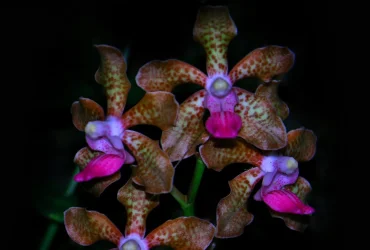 v13i2.334
v13i2.334ISSN: 1800-427X (printed)
eISSN: 1800-427X (online)
DOI:10.47605/tapro.v13i2.334
Submitted date: 19 September 2024
Accepted date: 20 November 2024
Published date: 4 December 2024
Pp. 88–100. Pls. 24–25.
UNVEILING MISIDENTIFICATION OF FORMERLY REPORTED Microhyla fissipes BOULENGER, 1884 (ANURA: MICROHYLIDAE) WITH NOTES ON TWO Microhyla SPECIES FROM SUMATRA
Vestidhia Y. Atmaja, Rury Eprilurahman*, Misbahul Munir, Eric N. Smith, Tuty Arisuryanti, Rosichon Ubaidillah & Amir Hamidy
*Corresponding author. E-mail: rurybiougm@ugm.ac.id
Abstract
Sumatra is widely recognized as a land bridge for the dispersal of amphibians between mainland Asia and the rest of the Indonesian Archipelago. Currently, six species of Microhyla are recognized in Sumatra: M. gadjahmadai, M. nakkavaram, M. palmipes, M. sundaica, M. superciliaris, and M. sriwijaya. Pradana et al. (2017) identified some Microhyla specimens as M. fissipes using molecular analysis (partial sequence of 16S mtDNA). Meanwhile, Yuan et al. (2016) restricted the distribution of M. fissipes to the northeast of the Red River Valley and Taiwan. In this study, we have revised the identification of ‘Microhyla sp. aff. fissipes’ Sumatra sensu Pradana et al. (2017) to M. mukhlesuri, based on both molecular and morphological analyses. Additionally, we report the first site records of M. mantheyi and M. butleri from Sumatra. We reconfirm the diagnostic characters based on their original descriptions and report on the morphological variation of the Sumatran populations of these three species.
Key words : 16S mtDNA, morphology, M. butleri, M. mantheyi, M. mukhlesuri, systematics
Section Editor: Vladislav Gorin
eISSN: 1800-427X (online)
DOI:10.47605/tapro.v13i2.334
Submitted date: 19 September 2024
Accepted date: 20 November 2024
Published date: 4 December 2024
Pp. 88–100. Pls. 24–25.
UNVEILING MISIDENTIFICATION OF FORMERLY REPORTED Microhyla fissipes BOULENGER, 1884 (ANURA: MICROHYLIDAE) WITH NOTES ON TWO Microhyla SPECIES FROM SUMATRA
Vestidhia Y. Atmaja, Rury Eprilurahman*, Misbahul Munir, Eric N. Smith, Tuty Arisuryanti, Rosichon Ubaidillah & Amir Hamidy
*Corresponding author. E-mail: rurybiougm@ugm.ac.id
Abstract
Sumatra is widely recognized as a land bridge for the dispersal of amphibians between mainland Asia and the rest of the Indonesian Archipelago. Currently, six species of Microhyla are recognized in Sumatra: M. gadjahmadai, M. nakkavaram, M. palmipes, M. sundaica, M. superciliaris, and M. sriwijaya. Pradana et al. (2017) identified some Microhyla specimens as M. fissipes using molecular analysis (partial sequence of 16S mtDNA). Meanwhile, Yuan et al. (2016) restricted the distribution of M. fissipes to the northeast of the Red River Valley and Taiwan. In this study, we have revised the identification of ‘Microhyla sp. aff. fissipes’ Sumatra sensu Pradana et al. (2017) to M. mukhlesuri, based on both molecular and morphological analyses. Additionally, we report the first site records of M. mantheyi and M. butleri from Sumatra. We reconfirm the diagnostic characters based on their original descriptions and report on the morphological variation of the Sumatran populations of these three species.
Key words : 16S mtDNA, morphology, M. butleri, M. mantheyi, M. mukhlesuri, systematics
Section Editor: Vladislav Gorin
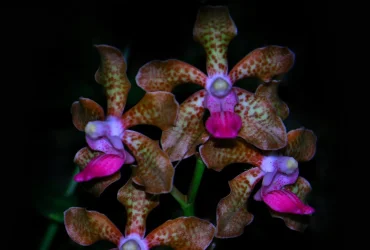 v13i2.333
v13i2.333ISSN: 1800-427X (printed)
eISSN: 1800-427X (online)
DOI:10.47605/tapro.v13i2.333
Submitted date: 9 July 2024
Accepted date: 24 October 2024
Published date: 13 December 2024
Pp. 82–87. Pls. 20–23.
VEGETATION ASSESSMENT NEAR LANDFILLS IN TWO CITIES IN KAZAKHSTAN USING NDVI AND SAVI
Galiya Abisheva, Aigul Kurmanbayeva*, Zulfiya Bayazitova, Anuarbek Kakabayev, Anar Ibrayeva, Natalia Khvatina, Lyudmila Makeyeva & Zhulduz Tleuova
*Corresponding author. E-mail: kurmanbayeva.aig@gmail.com
Abstract
This research aims to assess the environmental impact of municipal solid waste landfills on vegetation in the vicinity of landfill sites, focusing on two cities in Kazakhstan, Stepnogorsk and Kokshetau. The study utilized vegetation indices, specifically the Normalized Difference Vegetation Index (NDVI) and the Soil-Adjusted Vegetation Index (SAVI), to assess the health and density of vegetation. Landsat 8 OLIC2L2 satellite imagery spanning from July to August in the years 2017–2022 was processed in the ArcGIS program. The SAVI was employed to adjust for soil type and vegetation density. In the Stepnogorsk and Kokshetau sanitary zones, NDVI values during summer (2017–2022) ranged from 0.12 to 0.21, with SAVI values for Kokshetau between 0.15 and 0.25. ArcGIS analysis shows increased degradation and desertification, influenced by wind direction. NDVI and SAVI remote sensing effectively assessed vegetation in the sanitary zones of both landfills. The research underscores the significant environmental impact of municipal solid waste landfills on the surrounding vegetation.
Key words : ArcGIS, chlorophyll content, environment, landfills, solid waste, soil pollution
Section Editor: Beybit Nasiyev
eISSN: 1800-427X (online)
DOI:10.47605/tapro.v13i2.333
Submitted date: 9 July 2024
Accepted date: 24 October 2024
Published date: 13 December 2024
Pp. 82–87. Pls. 20–23.
VEGETATION ASSESSMENT NEAR LANDFILLS IN TWO CITIES IN KAZAKHSTAN USING NDVI AND SAVI
Galiya Abisheva, Aigul Kurmanbayeva*, Zulfiya Bayazitova, Anuarbek Kakabayev, Anar Ibrayeva, Natalia Khvatina, Lyudmila Makeyeva & Zhulduz Tleuova
*Corresponding author. E-mail: kurmanbayeva.aig@gmail.com
Abstract
This research aims to assess the environmental impact of municipal solid waste landfills on vegetation in the vicinity of landfill sites, focusing on two cities in Kazakhstan, Stepnogorsk and Kokshetau. The study utilized vegetation indices, specifically the Normalized Difference Vegetation Index (NDVI) and the Soil-Adjusted Vegetation Index (SAVI), to assess the health and density of vegetation. Landsat 8 OLIC2L2 satellite imagery spanning from July to August in the years 2017–2022 was processed in the ArcGIS program. The SAVI was employed to adjust for soil type and vegetation density. In the Stepnogorsk and Kokshetau sanitary zones, NDVI values during summer (2017–2022) ranged from 0.12 to 0.21, with SAVI values for Kokshetau between 0.15 and 0.25. ArcGIS analysis shows increased degradation and desertification, influenced by wind direction. NDVI and SAVI remote sensing effectively assessed vegetation in the sanitary zones of both landfills. The research underscores the significant environmental impact of municipal solid waste landfills on the surrounding vegetation.
Key words : ArcGIS, chlorophyll content, environment, landfills, solid waste, soil pollution
Section Editor: Beybit Nasiyev
Hubungi Kami
The ultimate aim of the journal is to provide an effective medium for communication of the latest and best scientific information.
Copyright © 2020 Taprobanica. All Rights Reserved
Jasa Pembuatan Website by IKT




